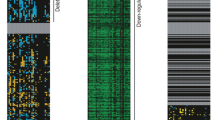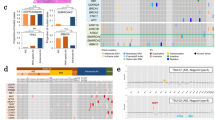Abstract
Lung squamous cell carcinoma (LUSC) causes approximately 400 000 deaths each year worldwide. The occurrence of LUSC is attributed to exposure to cigarette smoke, which induces the development of numerous genomic abnormalities. However, few studies have investigated the genomic variations that occur only in normal tissues that have been similarly exposed to tobacco smoke as tumor tissues. In this study, we sequenced the whole genomes of three normal lung tissue samples and their paired adjacent squamous cell carcinomas.We then called genomic variations specific to the normal lung tissues through filtering the genomic sequence of the normal lung tissues against that of the paired tumors, the reference human genome, the dbSNP138 common germline variants, and the variations derived from sequencing artifacts. To expand these observations, the whole exome sequences of 478 counterpart normal controls (CNCs) and paired LUSCs of The Cancer Genome Atlas (TCGA) dataset were analyzed. Sixteen genomic variations were called in the three normal lung tissues. These variations were confirmed by Sanger capillary sequencing. A mean of 0.5661 exonic variations/Mb and 7.7887 altered genes per sample were identified in the CNC genome sequences of TCGA. In these CNCs, C:G→T:A transitions, which are the genomic signatures of tobacco carcinogen N-methyl-N-nitro-N-nitrosoguanidine, were the predominant nucleotide changes. Twenty five genes in CNCs had a variation rate that exceeded 2%, including ARSD (18.62%), MUC4 (8.79%), and RBMX (7.11%). CNC variations in CTAGE5 and USP17L7 were associated with the poor prognosis of patients with LUSC. Our results uncovered previously unreported genomic variations in CNCs, rather than LUSCs, that may be involved in the development of LUSC.
Similar content being viewed by others
References
Lawrence MS, Stojanov P, Mermel CH, Robinson JT, Garraway LA, Golub TR, Meyerson M, Gabriel SB, Lander ES, Getz G. Discovery and saturation analysis of cancer genes across 21 tumour types. Nature 2014; 505(7484): 495–501
Meyerson M, Gabriel S, Getz G. Advances in understanding cancer genomes through second-generation sequencing. Nat Rev Genet 2010; 11(10): 685–696
Hecht SS. Lung carcinogenesis by tobacco smoke. Int J Cancer 2012; 131(12): 2724–2732
Auerbach O, Hammond EC, Kirman D, Garfinkel L. Effects of cigarette smoking on dogs. II. Pulmonary neoplasms. Arch Environ Health 1970; 21(6): 754–768
Herbst RS, Heymach JV, Lippman SM. Lung cancer. N Engl J Med 2008; 359(13): 1367–1380
Lemjabbar-Alaoui H, Hassan OUI, Yang YW, Buchanan P. Lung cancer: biology and treatment options. Biochim Biophys Acta 2015; 1856(2): 189–210
Cancer Genome Atlas Research Network. Comprehensive genomic characterization of squamous cell lung cancers. Nature 2012; 489 (7417): 519–525
Li C, Gao Z, Li F, Li X, Sun Y, Wang M, Li D, Wang R, Li F, Fang R, Pan Y, Luo X, He J, Zheng L, Xia J, Qiu L, He J, Ye T, Zhang R, He M, Zhu M, Hu H, Shi T, Zhou X, Sun M, Tian S, Zhou Y, Wang Q, Chen L, Yin G, Lu J, Wu R, Guo G, Li Y, Hu X, Li L, Asan, Wang Q, Yin Y, Feng Q, Wang B, Wang H, Wang M, Yang X, Zhang X, Yang H, Jin L, Wang CY, Ji H, Chen H, Wang J, Wei Q. Whole exome sequencing identifies frequent somatic mutations in cell-cell adhesion genes in Chinese patients with lung squamous cell carcinoma. Sci Rep 2015; 5: 14237
Yu XJ, Yang MJ, Zhou B, Wang GZ, Huang YC, Wu LC, Cheng X, Wen ZS, Huang JY, Zhang YD, Gao XH, Li GF, He SW, Gu ZH, Ma L, Pan CM, Wang P, Chen HB, Hong ZP, Wang XL, Mao WJ, Jin XL, Kang H, Chen ST, Zhu YQ, Gu WY, Liu Z, Dong H, Tian LW, Chen SJ, Cao Y, Wang SY, Zhou GB. Characterization of somatic mutations in air pollution-related lung cancer. EBioMedicine 2015; 2(6): 583–590
McKenna A, Hanna M, Banks E, Sivachenko A, Cibulskis K, Kernytsky A, Garimella K, Altshuler D, Gabriel S, Daly M, DePristo MA. The Genome Analysis Toolkit: a MapReduce framework for analyzing next-generation DNA sequencing data. Genome Res 2010; 20(9): 1297–1303
Li H, Durbin R. Fast and accurate long-read alignment with Burrows-Wheeler transform. Bioinformatics 2010; 26(5): 589–595
Franco B, Meroni G, Parenti G, Levilliers J, Bernard L, Gebbia M, Cox L, Maroteaux P, Sheffield L, Rappold GA, Andria G, Petit C, Ballabio A. A cluster of sulfatase genes on Xp22.3: mutations in chondrodysplasia punctata (CDPX) and implications for warfarin embryopathy. Cell 1995; 81(1): 15–25
Huang W, Sherman BT, Lempicki RA. Systematic and integrative analysis of large gene lists using DAVID bioinformatics resources. Nat Protoc 2009; 4(1): 44–57
Saito K, Yamashiro K, Ichikawa Y, Erlmann P, Kontani K, Malhotra V, Katada T. cTAGE5 mediates collagen secretion through interaction with TANGO1 at endoplasmic reticulum exit sites. Mol Biol Cell 2011; 22(13): 2301–2308
Burrows JF, McGrattan MJ, Johnston JA. The DUB/USP17 deubiquitinating enzymes, a multigene family within a tandemly repeated sequence. Genomics 2005; 85(4): 524–529
Ooi AT, Gower AC, Zhang KX, Vick JL, Hong L, Nagao B, Wallace WD, Elashoff DA, Walser TC, Dubinett SM, Pellegrini M, Lenburg ME, Spira A, Gomperts BN. Molecular profiling of premalignant lesions in lung squamous cell carcinomas identifies mechanisms involved in stepwise carcinogenesis. Cancer Prev Res (Phila) 2014; 7(5): 487–495
Gomperts BN, Spira A, Massion PP, Walser TC, Wistuba II, Minna JD, Dubinett SM. Evolving concepts in lung carcinogenesis. Semin Respir Crit Care Med 2011; 32(1): 32–43
Kadara H, Shen L, Fujimoto J, Saintigny P, Chow CW, Lang W, Chu Z, Garcia M, Kabbout M, Fan YH, Behrens C, Liu DA, Mao L, Lee JJ, Gold KA, Wang J, Coombes KR, Kim ES, Hong WK, Wistuba II. Characterizing the molecular spatial and temporal field of injury in early-stage smoker non-small cell lung cancer patients after definitive surgery by expression profiling. Cancer Prev Res (Phila) 2013; 6(1): 8–17
Wistuba II, Behrens C, Milchgrub S, Bryant D, Hung J, Minna JD, Gazdar AF. Sequential molecular abnormalities are involved in the multistage development of squamous cell lung carcinoma. Oncogene 1999; 18(3): 643–650
Qu LW, Zhou B, Wang GZ, Chen Y, Zhou GB. Genomic variations in paired normal controls for lung adenocarcinomas. Oncotarget 2017 (in press)
Olivier M, Weninger A, Ardin M, Huskova H, Castells X, Vallée MP, McKay J, Nedelko T, Muehlbauer KR, Marusawa H, Alexander J, Hazelwood L, Byrnes G, Hollstein M, Zavadil J. Modelling mutational landscapes of human cancers in vitro. Sci Rep 2014; 4: 4482
Dollé MET, Snyder WK, Dunson DB, Vijg J. Mutational fingerprints of aging. Nucleic Acids Res 2002; 30(2): 545–549
Govindan R, Ding L, Griffith M, Subramanian J, Dees ND, Kanchi KL, Maher CA, Fulton R, Fulton L, Wallis J, Chen K, Walker J, McDonald S, Bose R, Ornitz D, Xiong D, You M, Dooling DJ, Watson M, Mardis ER, Wilson RK. Genomic landscape of nonsmall cell lung cancer in smokers and never-smokers. Cell 2012; 150(6): 1121–1134
Qiu L,Wu J, Pan C, Tan X, Lin J, Liu R, Chen S, Geng R, Huang W. Downregulation of CDC27 inhibits the proliferation of colorectal cancer cells via the accumulation of p21Cip1/Waf1. Cell Death Dis 2016; 7(1): e2074
Wang J, Ma L, Tang X, Zhang X, Qiao Y, Shi Y, Xu Y,Wang Z, Yu Y, Sun F. Doxorubicin induces apoptosis by targeting Madcam1 and AKT and inhibiting protein translation initiation in hepatocellular carcinoma cells. Oncotarget 2015; 6(27): 24075–24091
Wang W, Song XW, Bu XM, Zhang N, Zhao CH. PDCD2 and NCoR1 as putative tumor suppressors in gastric gastrointestinal stromal tumors. Cell Oncol (Dordr) 2016; 39(2): 129–137
Adamson B, Smogorzewska A, Sigoillot FD, King RW, Elledge SJ. A genome-wide homologous recombination screen identifies the RNA-binding protein RBMX as a component of the DNA-damage response. Nat Cell Biol 2012; 14(3): 318–328
Acknowledgements
This work was supported by the National Natural Science Funds of China for Distinguished Young Scholar (No. 81425025), the National Key Research and Development Program of China (No. 2016YFC0905500), the National Natural Science Foundation of China (No. 81672765), the Strategic Priority Research Program of the Chinese Academy of Sciences (No. XDA12010307), and grants from the State Key Laboratory of Membrane Biology. The funders had no role in the design, data collection, and analysis of the study or in the preparation of and the decision to publish the manuscript. The results shown here are partly based on the data generated by The Cancer Genome Atlas, which is managed by the NCI and NHGRI. Information about TCGA can be found at http://cancergenome.nih.gov. The dbGaP accession number is phs000178.v9.p8.
Author information
Authors and Affiliations
Corresponding author
Electronic supplementary material
Rights and permissions
About this article
Cite this article
Zhang, D., Qu, L., Zhou, B. et al. Genomic variations in the counterpart normal controls of lung squamous cell carcinomas. Front. Med. 12, 280–288 (2018). https://doi.org/10.1007/s11684-017-0580-1
Received:
Accepted:
Published:
Issue Date:
DOI: https://doi.org/10.1007/s11684-017-0580-1




